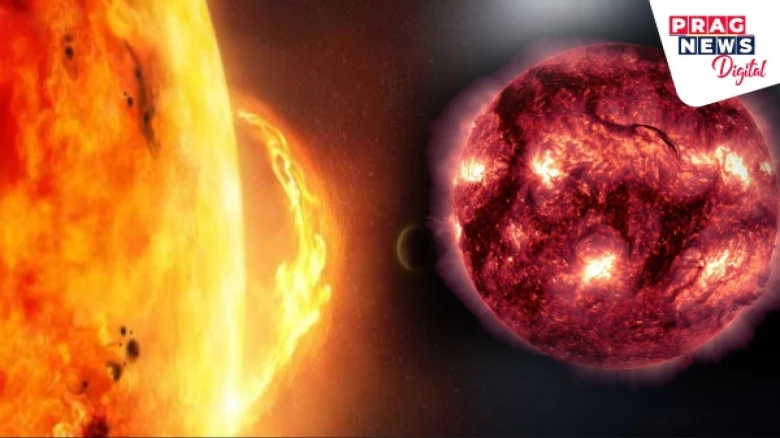Regional

The solar storm on July 19 could be a G2 or G3 storm.
Digital Desk: An impending geomagnetic storm that will be directed at Earth has scientists and researchers on the verge of panic.
A significant solar flare will cause radio blackouts in several locations around the world, according to research published on July 15.
Dr Tamitha Skov, aka the Space Weather Woman, recently forecasted a solar storm to strike Earth directly on July 19.
The physicist shared on social media that a snake-like filament was launched as a massive solar storm while in the Earth-strike zone. While in the Earth-strike site, a large solar storm that resembled a snake was projected. She wrote: "Direct Hit!
NASA projected an early July 19 impact. This one could produce powerful auroral displays deep in the middle latitudes.
According to NASA, amateur radio and GPS users should anticipate signal interruptions on Earth's nightside.
She also shared that the July 19 solar storm could be of G2 or G3 level.
"The long snake-like filament cartwheeled its way off the #Sun in a stunning ballet. The magnetic orientation of this Earth-directed #solarstorm will be tough to predict. G2-level (possibly G3) conditions may occur if the magnetic field of this storm is oriented southward!" she said.
"In a stunning ballet, the long, snake-like filament cartwheeled its way off the Sun. It will be difficult to predict the magnetic orientation of this Earth-directed solar storm. If the magnetic field of this storm is oriented southward, G2-level (possibly G3) conditions could develop.
According to studies, geomagnetic storms are rated on a "G scale" from one to five, with G1 denoting a minor storm and G5 denoting an extreme one. It suggests that a radio frequency disturbance, power grid blackouts, or communication blackouts may be experienced globally.
Solar activity was highly active in 2021 due to the Sun's filaments production and sunspots' development. Several asteroids have struck even our planet. None, though, has done any harm.
A geomagnetic storm of the G1 class recently hit Earth, and another one of the same class struck in March 2022.
It's important to remember that these solar storms don't generally cause much damage.
Also Read: Antarctica’s sky dazzles in shades of pinkish-purple: Check photos
Leave A Comment